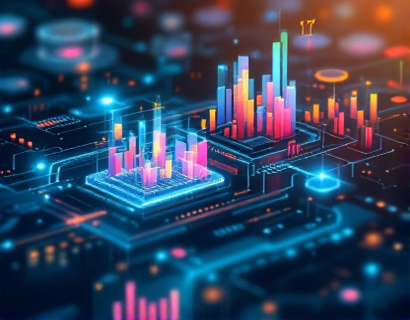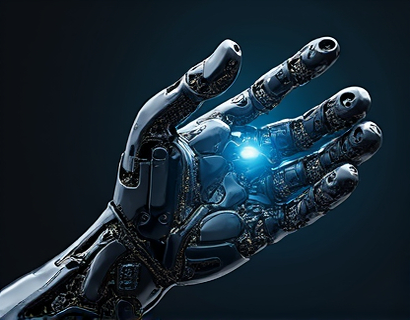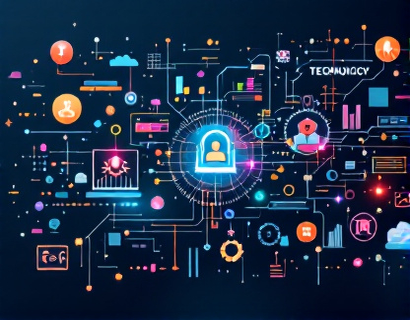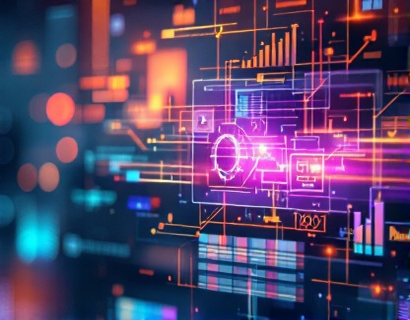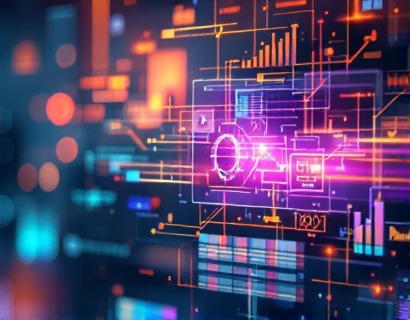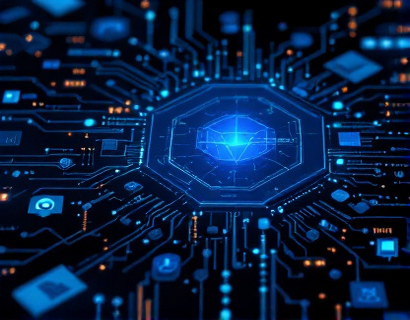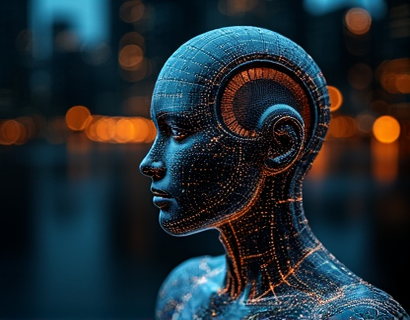Revolutionizing Digital Interactions: The Synergy of Crypto and AI
The intersection of cryptocurrency and artificial intelligence is giving rise to a new era of digital innovation, fundamentally transforming how users interact with apps and services. This convergence is not just about merging two advanced technologies but about creating a seamless, secure, and highly personalized digital experience. As we delve into this topic, we will explore the latest advancements in tech-driven solutions that are redefining user engagement through the power of blockchain and machine learning.
Understanding the Basics: Crypto and AI
To fully appreciate the transformative impact of combining cryptocurrency and AI, it's essential to understand the fundamentals of each technology. Cryptocurrency, often referred to as digital or virtual currency, operates on a decentralized network known as a blockchain. This technology ensures transparency, security, and immutability, making it an ideal foundation for various applications beyond just financial transactions.
Artificial intelligence, on the other hand, involves the simulation of human intelligence processes by machines, particularly computer systems. These processes include learning, reasoning, and self-correction. AI can analyze vast amounts of data, recognize patterns, and make decisions with minimal human intervention, enhancing efficiency and accuracy in numerous fields.
When these two technologies converge, the potential for innovation becomes immense. The decentralized and secure nature of cryptocurrency, combined with the intelligent and adaptive capabilities of AI, opens up new possibilities for enhancing digital experiences.
Enhanced Security and Trust
One of the most significant benefits of integrating AI with cryptocurrency is the enhancement of security and trust in digital interactions. AI algorithms can detect and prevent fraudulent activities in real-time, analyzing transaction patterns and user behavior to identify anomalies. This proactive approach to security is crucial in a world where cyber threats are becoming increasingly sophisticated.
Moreover, the use of smart contracts, which are self-executing contracts with the terms directly written into code, ensures that transactions are executed only when predefined conditions are met. AI can optimize the creation and management of these smart contracts, reducing the risk of errors and increasing the reliability of transactions. This synergy not only protects users' assets but also builds a higher level of trust in digital platforms.
Personalized User Experiences
AI's ability to process and analyze vast amounts of data makes it an excellent tool for creating personalized user experiences. In the context of cryptocurrency and digital services, AI can tailor recommendations, content, and interactions based on individual user preferences and behaviors. For instance, a digital wallet app powered by AI can suggest optimal investment strategies, monitor market trends, and provide real-time alerts based on a user's financial goals and risk tolerance.
Furthermore, AI-driven chatbots and virtual assistants can offer 24/7 customer support, answering queries and resolving issues promptly. These AI-powered tools can understand natural language, learn from past interactions, and continuously improve their performance, ensuring a seamless and intuitive user experience.
Decentralized Applications and AI Integration
Decentralized applications (dApps) are at the forefront of the crypto-AI revolution, offering users greater control and privacy. These applications run on blockchain networks and leverage AI to enhance functionality and user engagement. For example, AI can be used to optimize the performance of dApps by dynamically adjusting resource allocation based on user demand and network conditions.
In the realm of gaming, AI can create more realistic and adaptive non-playable characters (NPCs), while also personalizing gameplay experiences. In finance, AI can enhance trading algorithms within dApps, providing users with advanced analytical tools and predictive insights. The combination of decentralization and AI ensures that these applications are not only secure and transparent but also highly responsive to user needs.
Data Privacy and User Control
Data privacy has become a paramount concern in the digital age, and the integration of cryptocurrency and AI offers a promising solution. Blockchain's inherent properties ensure that data is stored securely and transparently, while AI can help users manage their data more effectively. AI-driven tools can enable users to control how their data is used, shared, and monetized, giving them greater autonomy and privacy.
For instance, AI can assist in anonymizing sensitive information while still allowing for valuable insights to be derived from the data. This balance between utility and privacy is crucial for building user trust and ensuring the widespread adoption of crypto-AI solutions.
Market Efficiency and Liquidity
The financial sector stands to benefit significantly from the synergy of cryptocurrency and AI. AI can analyze market data, identify trends, and predict price movements with a level of accuracy that traditional methods cannot match. This capability can lead to more efficient markets, where prices better reflect underlying value.
In the context of cryptocurrency trading, AI can enhance liquidity by matching buyers and sellers more effectively, reducing slippage, and optimizing trade execution. AI-driven market makers can provide liquidity in low-volume markets, ensuring that transactions are executed smoothly and at fair prices. This increased efficiency and liquidity can attract more users to the crypto ecosystem, fostering growth and adoption.
Challenges and Considerations
While the potential of combining cryptocurrency and AI is vast, there are several challenges and considerations that must be addressed. One of the primary concerns is the regulatory landscape. As both crypto and AI technologies evolve, regulators are grappling with how to oversee these innovations without stifling creativity and growth. Striking the right balance between innovation and regulation is crucial for the sustainable development of crypto-AI solutions.
Another challenge is the technical complexity involved in integrating these technologies. Developing robust and scalable systems that can handle the demands of real-time data processing and secure transactions requires significant expertise and resources. Additionally, ensuring interoperability between different blockchain platforms and AI systems is essential for creating a cohesive and user-friendly ecosystem.
Future Prospects: The Next Generation of Digital Solutions
Looking ahead, the future of digital experiences is bright, with the convergence of cryptocurrency and AI poised to drive further innovation. As technology continues to advance, we can expect to see more sophisticated AI algorithms that can better understand and predict user behavior, leading to even more personalized and intuitive digital services.
The integration of AI with other emerging technologies, such as the Internet of Things (IoT) and 5G networks, will further enhance the capabilities of crypto-powered applications. For instance, IoT devices can generate vast amounts of data that AI can analyze to optimize resource usage and improve user experiences in smart homes, cities, and industries.
Moreover, the development of central bank digital currencies (CBDCs) and their potential integration with AI could revolutionize the financial system, making transactions faster, cheaper, and more accessible. The combination of decentralized finance (DeFi) and AI can also lead to more inclusive financial services, providing opportunities for underserved populations around the world.
In conclusion, the synergy between cryptocurrency and AI is not just a technological curiosity but a powerful force that is reshaping the digital landscape. By enhancing security, personalizing user experiences, optimizing market efficiency, and ensuring data privacy, this convergence is paving the way for a new generation of digital solutions that are more secure, efficient, and user-centric. As we continue to explore and harness the potential of these technologies, the future of digital interactions looks increasingly promising.






